Take a tour of Harvey Mudd College, the tiny STEM 'bootcamp' outside Los Angeles whose graduates out-earn Harvard and Stanford alums
After three busy years at Mudd, Vasquez is currently working on a project on flood management in Kenya, where she’ll be traveling later this fall. She told us that, facing graduation, she's finally striking a balance between her course load and enjoying free time.

Now, after testing their underwater robotics systems, students deploy them into the ocean at the end of the course.
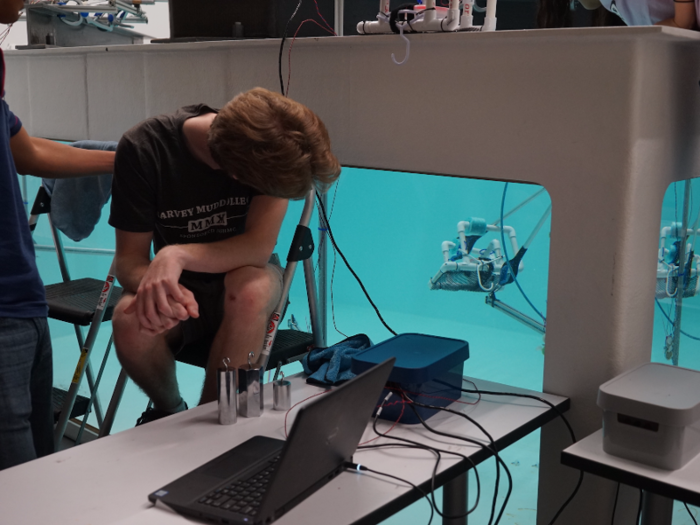
The lab was created in 2015 thanks to a grant from the Hearst Foundation. Previously, students used a faculty member's private swimming pool to deploy their robots.
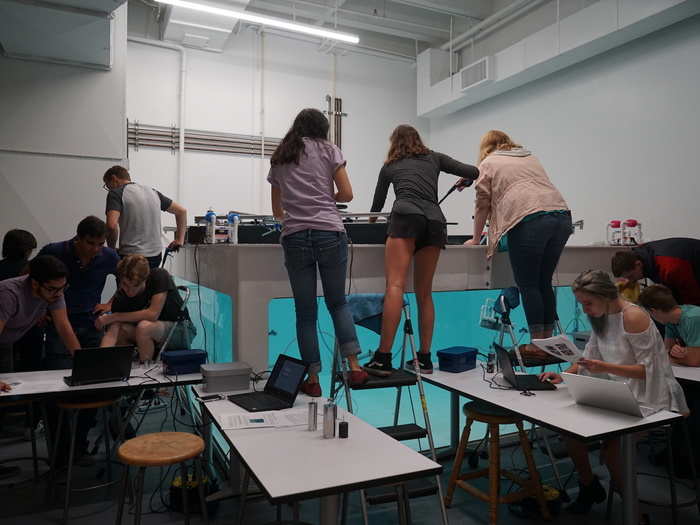
But the culture was starting to change by the time Orwin returned to teach at Mudd in the early 2000's. There are currently seven female faculty members in the engineering department out of the 24 full-time faculty.
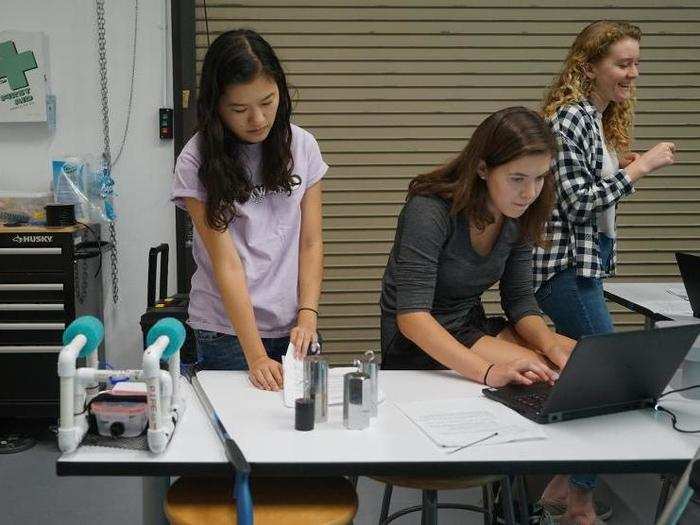
Some of that might be attributed to President Klawe, who became the first female president of Mudd, and who has worked tirelessly to improve representation in courses.
Liz Orwin, the first female chair of the engineering department, attended Mudd in the 1990s and said the environment wasn't favorable for women in STEM. "I often describe it as living in someone else's culture," she said.
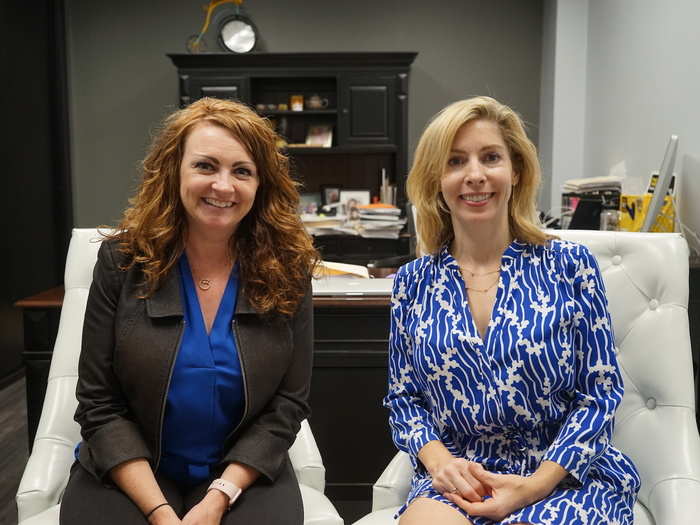
Finally, we checked out an underwater robotics lab in the engineering building, where freshmen in an introductory engineering course were working through a hands-on practicum.
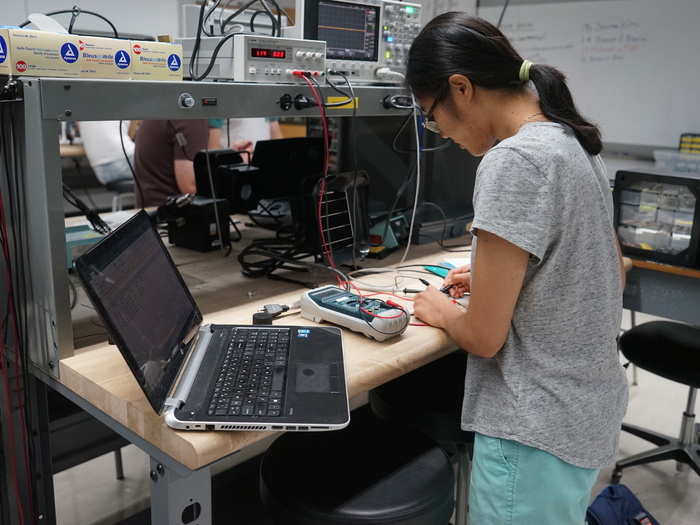
Vasquez showed us hers. She is a proctor — similar to an RA — for her dorm. Her primary job is to make sure everyone, particularly "the frosh" are safe. With permission, students have free rein to paint the walls inside their dorms and decorate.

Some of the dorms have private kitchens while others rely on a common space with a spacious kitchen, couches, and workspace.
All students live on campus at Mudd. Nine co-ed dorm buildings are located on campus and each has its own culture, Vasquez told us.
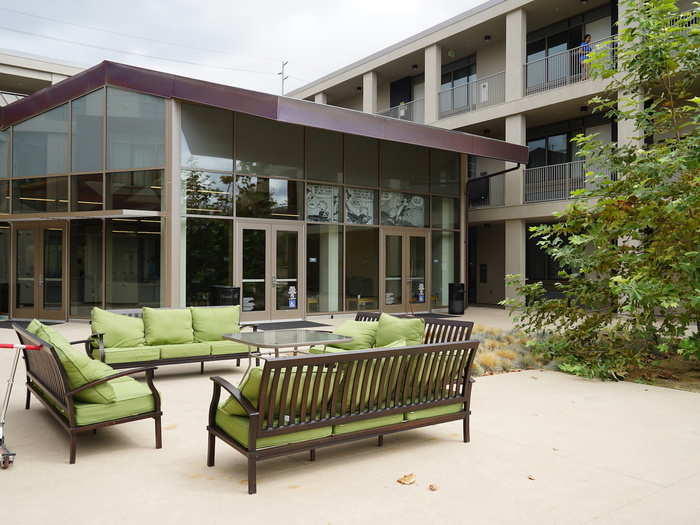
Dorm selection each year is based on seniority and chosen through a lottery system.
Vasquez said Mudd isn't all work and no play.
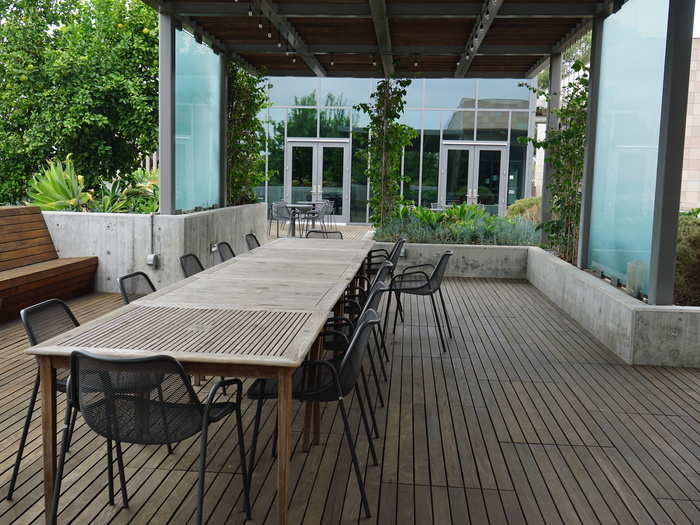
Even though each academic year starts with a dry week — meaning no alcohol allowed — "wet season" begins after. When Mudders have free time, students like to attend school-wide organized events like themed parties, dinners, and a cappella shows.
And, thanks to its southern California location, Mudd has a spacious rooftop deck that doubles as an outdoor classroom (pictured).
Next, we met up with senior engineering student Andrea Vasquez, who took some time out of her busy schedule to show us around campus.
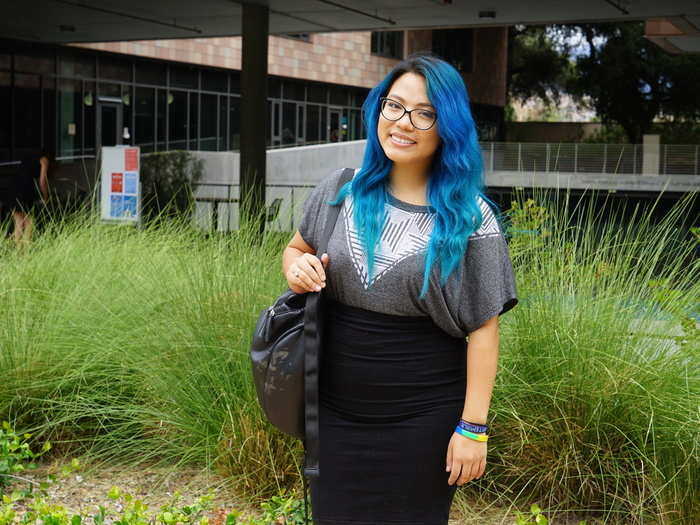
She is among the 75% of students who receive financial aid. The $60,000 a year she receives in aid from Mudd helps immensely, according to Vasquez. She values the school's tight-knit community, and regards it as the school's biggest asset. "People can make it through by having that community," she said.
But Mudd's rigorous workload and bootcamp mentality have also had some detrimental side effects. Last semester, in a highly unusual move for a college, the school shut down for two days as students protested multiple issues roiling the campus.
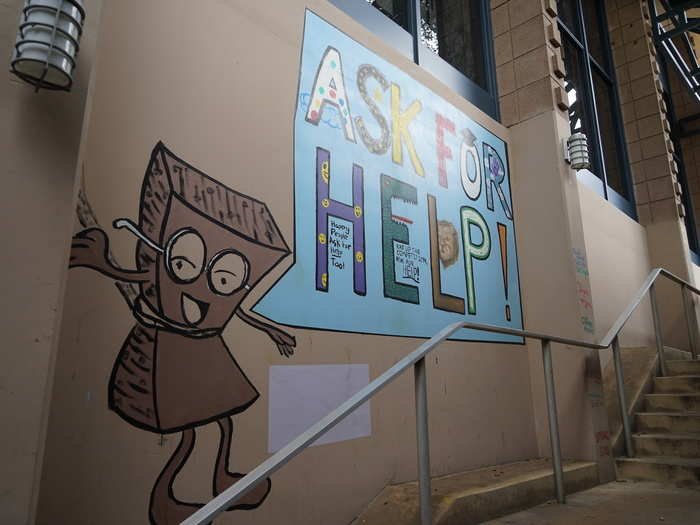
Among the issues were:
• tensions about the heavy workload.
• The death of two Harvey Mudd students and the suicide of a Scripps College student, which dealt a blow to the tight-knit community.
• The results of a survey commissioned by the school to examine classroom environment. When the results leaked, tudents learned that some faculty members thought there had recently been a decline in the quality of admitted students.
Student frustration came to a head, and protests prompted administrators to shut down the school.
In response, administrators are trying to change the culture and an "asking for help" initiative has cropped up this academic year.
"We've put in a lot of work in over the summer trying to make sure that were going to start off this semester in a better place," Harvey Mudd President Maria Klawe told Business Insider.
Klawe noted that workload issues have been an ongoing problem at the school and that the administration is currently redoing the core curriculum to solve the issues.
The curriculum revamp won't be solved overnight, but the school has begun seeking input from students, faculty, and alumni to address concerns.
The introductory computer-science course is intentionally broader than most intro courses. The school provides both basic and advanced sections of the intro course so students who might otherwise dominate the discussion don't intimidate students who are less familiar with computer science.

Faculty found that in order to engage more women in STEM, they needed to design curriculum to remove intimidation and incorporate more hands-on scenarios to show that coding can be used to solve everyday problems.
These innovations paid off, and in 2016, Mudd graduated its first majority female class of computer science majors. Nationally, men make up more than 84% of undergraduates majoring in computer science, according to the Computing Research Association.
Mudd has accomplished the same feat for female engineers and physics majors, two other traditionally male-dominated majors.
We sat in on an introductory computer science class. A hallmark of Mudd is the strong focus the school places on STEM (science, technology, engineering, and math) disciplines.
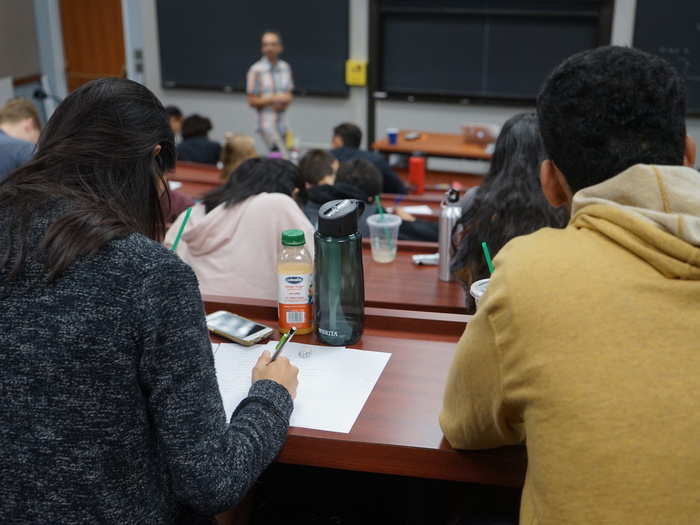
Mudd embraces its academic rigor and describes its core curriculum as a "boot camp in the STEM disciplines — math, physics, chemistry, biology, computer science, and engineering — as well as classes in writing and critical inquiry" that it says "gives students a broad scientific foundation and the skills to think and to solve problems across disciplines."
Every entering student must take a computer science class, a rare requirement for a liberal arts college. But Mudders must also graduate with a strong liberal-arts background, taking just as many courses in the humanities as they must in core introductory courses in the sciences.
Board racks are near every door and students grab their longboard, shortboard, or free lines — two separate wooden boards that attach to your shoes with wheels underneath — for the short ride to class. Scooters, bicycles, and even unicycles are also popular on campus.

Not even on campus 10 minutes, we realized Mudd would provide an experience unlike many of the other schools we have toured.
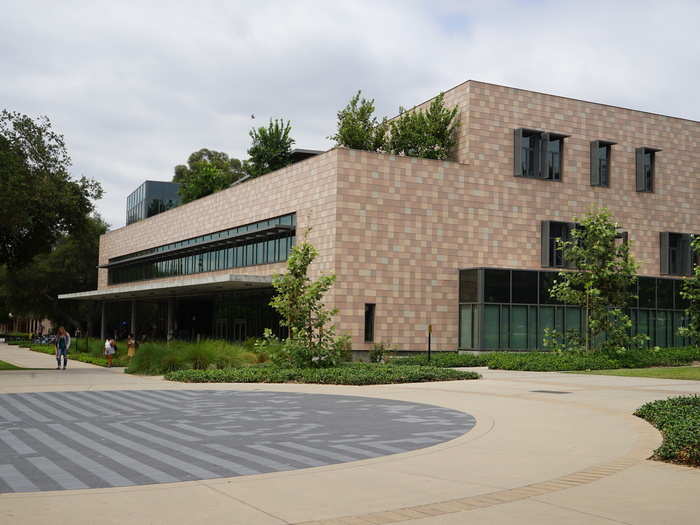
The campus was quiet. We'd come to find out it's due to the highly studious nature of the student body. During our five-hour visit, there was only one 15-minute period where campus seemed busy. Many were hurrying off to their next class or working on laptops.
We arrived on Harvey Mudd's campus on a gloomy September day about two weeks into the 2017-2018 school year.
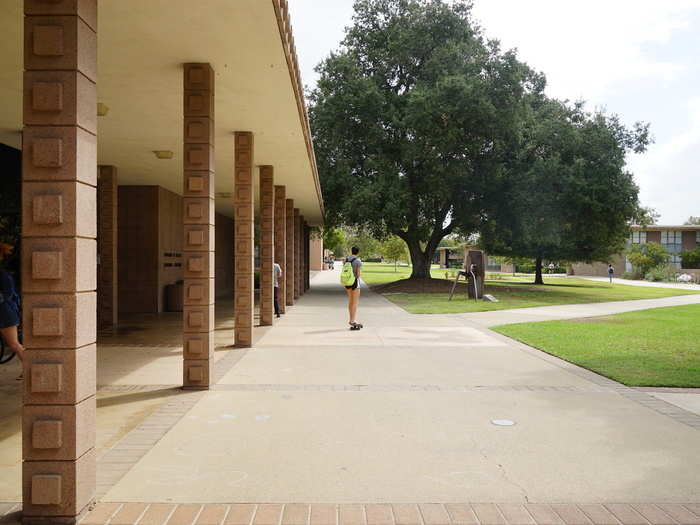
The school is a member of the Claremont Colleges Consortium — which includes Claremont McKenna College, Pitzer College, Pomona College, Scripps College, Claremont Graduate University and Keck Graduate Institute of Applied Life Sciences. Mudd students, called Mudders, can take classes at any of the other member schools.
Popular Right Now
Popular Keywords
- India’s wearables market decline
- Vivo V40 Pro vs OnePlus 12R
- Nothing Phone (2a) Plus vs OnePlus Nord 4
- Upcoming smartphones launching in August
- Nothing Phone (2a) review
- Current Location in Google
- Hide Whatsapp Messages
- Phone is hacked or not
- Whatsapp Deleted Messages
- Download photos from Whatsapp
- Instagram Messages
- How to lock facebook profile
- Android 14
- Unfollowed on Instagram
Advertisement